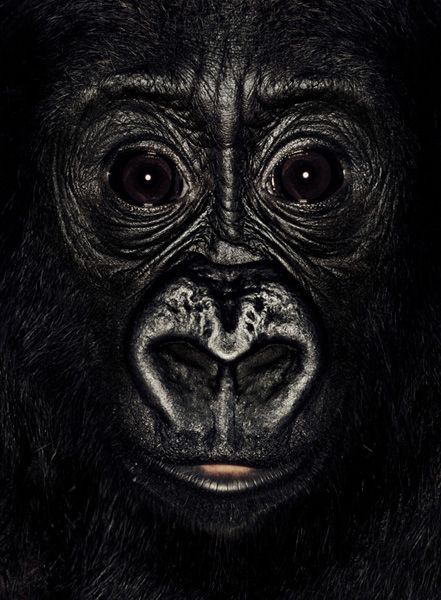|
|
Ape Portrait
|
Biology
The gibbon family, Hylobatidae, is composed of fifteen medium-sized species. Their major distinction is their long arms, which they use to brachiate through the trees. As an evolutionary adaptation to this arboreal lifestyle, their wrists are ball and socket joints. The largest of the gibbons, the Siamang, weighs up to 14 kg (31 lb). In comparison, the smallest great ape is the Common Chimpanzee at a modest 40 to 65 kg (88 to 143 lb).
The great ape family was previously referred to as Pongidae, and humans (and fossil hominids) were omitted from it, but there is no biological case for doing this. This definition is still used by many anthropologists and by lay people; however, it makes Pongidae paraphyletic, whereas most taxonomists nowadays encourage monophyletic groups. Chimpanzees, gorillas, humans and orangutans are all more closely related to one another than any of these four genera are to the gibbons. However, the term "hominid" is still used with the specific meaning of extinct animals more closely related to humans than the other great apes (for example, australopithecines), even though "hominin" is now correct in that usage. It is now usual to use even finer divisions, such as subfamilies and tribes to distinguish which hominoids are being discussed. Current evidence implies that humans share a common, extinct, ancestor with the chimpanzee line, from which we separated more recently than the gorilla line.
|
|









